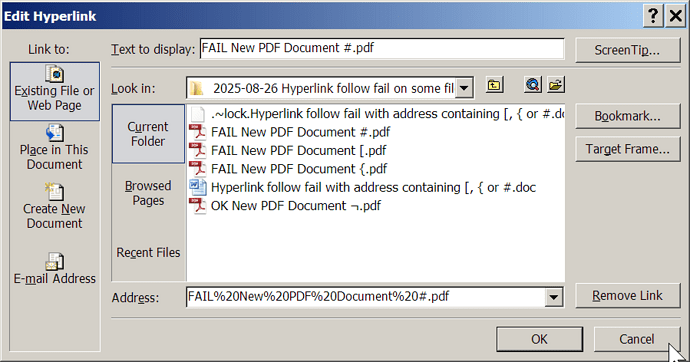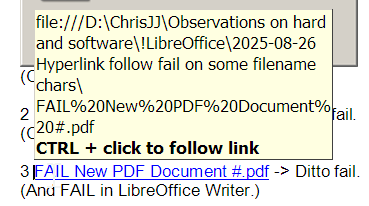Yes this is URL. It was filepath, until Word have converted it - incorrectly - into a (relative) URL; it stores the link in the DOCX package’s word/_rels/document.xml.rels - try and see how Word puts wrong “filename” there, ending with %20, without the hash and .pdf. Where are they? Well, open word/document.xml, and find the .pdf as the “anchor” of the hyperlink. Which is what happens, when someone first URL-encodes the filename incorrectly, and then handles special URL characters as the standard says.
It is not.
Because it does not try to open that file, but instead - as the hyperlink demands - it tries to open file FAIL New PDF Document (note that the filename ends with a space, and has no extension), with the fragment (sometimes called “anchor”) .pdf. Exactly what Word stored. The URL looks not like the correct
file:///D:/ChrisJJ/.../FAIL%20New%20PDF%20Document%20%23.pdf
but as incorrect
file:///D:/ChrisJJ/.../FAIL%20New%20PDF%20Document%20#.pdf
where # is not part of the filename, but a special character separating hierarchical path from fragment.
And if you had a correctly encoded URL (as I shown above first), and for some reason, the file that it pointed to would be absent, then the message would look like
“file:///D:/ChrisJJ/…/FAIL New PDF Document %23.pdf” cannot be passed …
Note how the spaces were decoded from %20, but hash wasn’t - because we use a special decoding method here.










